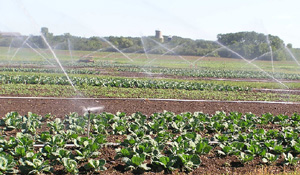Contents
- Resources from eXtension Farm Energy
- Strategies and Checklists
- Construction and Comprehensive Greenhouse Guides
- High Tunnels
- Geothermal Heating
- Greenhouse Efficiency and Conservation Case Studies
- Miscellaneous Resources related to Greenhouse Energy
- Contributors to this Article
Greenhouses do their job most successfully using designs and siting for energy efficiency and maximum light transmission. Greenhouses must optimize crop growth and energy use by allowing sunlight in during the day, retaining as much heat as possible during cold weather, and providing sufficient ventilation to …




 Energy efficiency and conservation are integral to sustainable agriculture. Efficiency means increasing the work or yield per unit of energy; conservation means reducing total energy usage
Energy efficiency and conservation are integral to sustainable agriculture. Efficiency means increasing the work or yield per unit of energy; conservation means reducing total energy usage